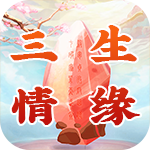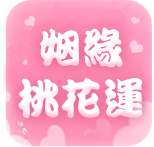1. 有關茶文化和喝茶的好處英文句子
The Chinese people, in their drinking of tea, place much significance on the act of "savoring." "Savoring tea" is not only a way to discern good tea from mediocre tea, but also how people take delight in their reverie and in tea-drinking itself. Snatching a bit of leisure from a busy schedule, making a kettle of strong tea, securing a serene space, and serving and drinking tea by yourself can help banish fatigue and frustration, improve your thinking ability and inspire you with enthusiasm. You may also imbibe it slowly in small sips to appreciate the subtle allure of tea-drinking, until your spirits soar up and up into a sublime aesthetic realm. Buildings, gardens, ornaments and tea sets are the elements that form the ambience for savoring tea. A tranquil, refreshing, comfortable and neat locale is certainly desirable for drinking tea. Chinese gardens are well known in the world and beautiful Chinese landscapes are too numerous to count. Teahouses tucked away in gardens and nestled beside the natural beauty of mountains and rivers are enchanting places of repose for people to rest and recreate themselves. China is a country with a time-honored civilization and a land of ceremony and decorum. Whenever guests visit, it is necessary to make and serve tea to them. Before serving tea, you may ask them for their preferences as to what kind of tea they fancy and serve them the tea in the most appropriate teacups. In the course of serving tea, the host should take careful note of how much water is remaining in the cups and in the kettle. Usually, if the tea is made in a teacup, boiling water should be added after half of the cup has been consumed; and thus the cup is kept filled so that the tea retains the same bouquet and remains pleasantly warm throughout the entire course of tea-drinking. Snacks, sweets and other dishes may be served at tea time to complement the fragrance of the tea and to allay one's hunger. 參考譯文: 中國人飲茶, 注重一個"品"字。
"品茶"不但是鑒別茶的優劣,也帶有神思遐想和領略飲茶情趣之意。在百忙之中泡上一壺濃茶,擇雅靜之處,自斟自飲,可以消除疲勞、滌煩益思、振奮精神,也可以細啜慢飲,達到美的享受,使精神世界升華到高尚的藝術境界。
品茶的環境一般由建筑物、園林、擺設、茶具等因素組成。飲茶要求安靜、清新、舒適、干凈。
中國園林世界聞名,山水風景更是不可勝數。利用園林或自然山水間,搭設茶室,讓人們小憩,意趣盎然。
中國是文明古國,禮儀之邦,很重禮節。凡來了客人,沏茶、敬茶的禮儀是必不可少的。
當有客來訪,可征求意見,選用最合來客口味的茶葉和最佳茶具待客。主人在陪伴客人飲茶時,要注意客人杯、壺中的茶水殘留量,一般用茶杯泡茶,如已喝去一半,就要添加開水,隨喝隨添,使茶水濃度基本保持前后一致,水溫適宜。
在飲茶時也可適當佐以茶食、糖果、菜肴等,達到調節口味和點心之功效。 注釋: 1.神思遐想:reverie。
2.領略飲茶情趣:take delight in tea-drinking。 3.在百忙之中泡上一壺濃茶……:這個句子較長,譯者根據其意思的層次,把它分成了兩個完整的句子來翻譯,這樣就有較大的自由度來遣詞造句。
4.擇靜雅之處:securing a serene space。 5.細啜慢飲:imbibe slowly in small sips。
6.達到美的享受:即"享受到飲茶之美"。allure這里是名詞,意為"迷人之處",也可用beauty。
7.使精神世界升華到高尚的藝術境界:until your spirits soar up and up into a sublime aesthetic realm。 8.利用園林或自然山水間,搭設茶室:翻譯時用了tucked away和nestled,比用built要形象、優美得多。
9.讓人們小憩,意趣盎然:意思是"(茶室)是讓人們休息、娛樂的迷人場所。" 10.禮儀之邦:即是"一個很講究禮儀的地方","很重禮節"為重復,不譯。
11.當有客來訪:是"凡來了客人"的重復,可不譯。根據下文的內容,加上before serving tea,使上下銜接貼切自然。
12.征求意見,選用最合來客口味的茶葉和最佳茶具待客:可理解為"詢問來客他們最喜歡什麼茶葉,然后用最合適的茶具給客人敬茶"。 13.主人在陪伴客人飲茶時:譯為in the course of serving tea,與前面before serving tea相呼應。
14.主人在陪伴客人飲茶時……水溫適宜:這句話較長,譯者同樣根據其意思的層次,把它分成了兩個完整的句子來翻譯。 15.隨喝隨添:and thus the cup is kept filled或者and in this way the cup is kept filled。
16.茶食:意思為"點心、小吃"。 17.達到調節口味和點心之功效:"點心"為方言"點饑、充饑"的意思。
2. 求十條關于茶文化的英語句子
1、This tonic is carefully crafted to enhance your longevity, adaptability, and thrivability!
2、Throughout Asia, Gynostemma teas are consumed as a daily tea by health conscious folks.
3、Gynostemma is known as "Magical Grass" in China. It iscommonly used known as "Magical Grass" in China.
4、With five premier tonic herbs infused with premium grade Gynostemmaleaves, this tea yields one of the most broad spectrum health promoting tonicbrews in the world.
1.精心調制的茶湯能夠增強免疫力,有益新陳代謝,使人長壽
2.在整個亞洲,gynostemma tea 絞股藍茶 被追求健康保健的人們每日飲用
3.在中國 絞股藍 gynostemma 絞股藍 作為一種“神奇草藥”為人所知.通常情況下,人們稱它為 “神奇仙草” (這倆句一個意思啊)
4. 作為世界上面積最大的保健草藥種植園之一,這所茶場使用5種頂級的草藥來提升絞股藍茶葉的品質.
3. 關于茶文化的英語作文
Tea ceremony belongs to oriental culture. Tea ceremony is “To regard tea as precious and gracious drink while drinking tea is a spiritual enjoyment, an art or a means of cultivating the moral character and nourishing the nature.”Tea ceremony is a kind of ceremony to teach people about the law and discipline of rite as well as moral cultivation by means of drinking tea. Mr. Zhuang Wanfang also summarized the basic spirit of Chinese tea ceremony as, “honour, beauty, harmony and respect” and explained, “cultivating morality, being honest and money saving, in order to conduct oneself in society harmoniously and honestly, and to respect and love people.”/question/index?qid=20091129185901AAlh9uH。
4. 關于茶英語句子
茶英語句子:
I should like to have a good tea.
我想吃一頓好茶點。
When I drink tea, my glasses mist over.
我喝茶時眼zd鏡片上會蒙上一層水汽。
One import that comes into England is tea.
茶葉是輸入英國的商品之一。
茶的單詞是:tea
讀音:英&;專nbsp;[tiː] 美 [ti]
5. 有關茶文化的英語
Chinese tea has a history of over 5,000 years, during which a series of unique tea culture have come into being, covering from tea plant cultivation and conservation, tea-leaf picking to processing and sampling tea. Tea-leaves are mainly produced in the southern area to the Yangtze River for mild climate and fertile ground there, such as the provinces of Zhejiang, Yunnan, Guizhou and Fujian. There produce an abundance of renowned tea varieties, e.g. Longjin, Wulong, Pu'er, Tieguangyin.
Tea culture is one of the common traits shared by all the 56 ethnic groups in China. Many Chinese people believe that a day is not perfect without a cup of tea. Either in the warm southern mountain area or on the frozen northern grassland, stuff like Gongfu tea, buttered tea and milk tea are all among the favorite drinks. Furthermore, both ancient and modern Chinese people tend to indulge in elaborating on poems, essays, dances and dramas on the tea.
茶在中國已經有5000年的歷史。在漫長的歷史中,圍繞茶的栽培、養護、采摘、加工、品飲形成了一整套獨具特色的茶文化及相關藝術。長江以南是中國茶葉的主產區。浙江、云南、貴州、福建等地氣候溫和,土地肥沃,十分適合茶葉的生長,造就了龍井、烏龍、普洱、鐵觀音這些馳名中外的名品。
茶文化是中華多民族文化中的一個共同特征。五十六個民族都有飲茶的習俗。許多中國人在生活中不可一日無茶。不論是在溫和潮濕的南方山區,還是冰天雪地的北方草原,工夫茶、酥油茶、奶茶都是人們特別喜愛的飲品。以茶為題的詩歌、散文、舞蹈、戲劇更為人們特別津津樂道。
6. 關于茶文化的英語作文
茶和中國的茶文化(Tea and the Tea Culture of China)
Since I started my major in the tea culture of China, I have been deeply impressed by its sophistication and beauty. I would like to share some fascinating aspects of the tea culture of China.
In a country with the history of five thousand years, the Chinese tea drinking habit dated back to the Tang Dynasty (618-907AD). It became a national tradition and led to development of a delicate tea drinking ritual. Over the centuries, poets and artists in China wrote many marvelous masterpieces, in appreciation of tea and Chinese people's constant love of tea drinking .One of the best-known writers is Lu Yu, who was regarded as the “Tea Sage ” for he composed the first book on tea. In his classic book, he detailed his studies of tea, such as the origin of tea, tea tools, tea picking, tea cooking, tea ceremony and well-known areas where tea was grown. And the valuable knowledge he recorded has laid foundation for modern tea culture development.
Based on ways in which tea leaves are processed, there are five distinct types of tea. They are as follow: the green tea, the black tea, the Wulong tea, the compressed tea and the scented tea. Among them, may foreigners are familiar with the green tea. The Longjing tea, of the green type, has a reputation
7. 有誰幫我找一下關于茶文化的英語文章
Chinese Tea
History of Tea
According to Lu Yu, writer of the book "Tea Classics" during the Tang Dynasty, Chinese tea has enjoyed a history of more than 4000 years.
Tea was used as offerings in the West Zhou, vegetables in the Spring and Autumn period, and medicine in the Warring period. Later in the West Han dynasty, it became a major commodity.
During the 300 years between the Three Kingdoms period and the Northern and Southern Dynasties, especially in the latter era, Buddhism was extremely popular. The Buddhists applied tea to relieve sleep in Za-zen, so tea trees spread along valleys and around Buddhist temples. That is why people say tea and Buddhism accompanied each other during their development in China.
Till the Tang Dynasty, tea became popular with the common people. In the Ming Dynasty, tea trade began to play an important role in the government's economic plans and the "Tea and Horse Bureau" was set up to supervise the tea trade.
In the 6th century, a Buddhist monk brought tea to Japan and in the 16th century a Portuguese missionary introduced tea to Europe. It was then that tea truly became an international drink.
Presently in China, the tea family not only consists of traditional tea, but also tea beverage, tea food, tea medicine and other tea products.
8. 有沒有關于茶的英文詩句
Tea Time
Sing, kettle, sing,
Etty can hear;
Your kind song bring
Nice tea-time near;
Nice toast and tea,
Kettle, I know,
Not far can be
When you sing so.
Sing father here,
Now the room's bright—
Bright, snug, and dear,
With warm firelight.
Sing, bring him home;
We always know
He soon will come
When you sing so.
Here's his soft chair,
Soon you will see
更多參考:/tag/tea-poems/
或者google國外版搜索關鍵詞,如:poetry tea等


















